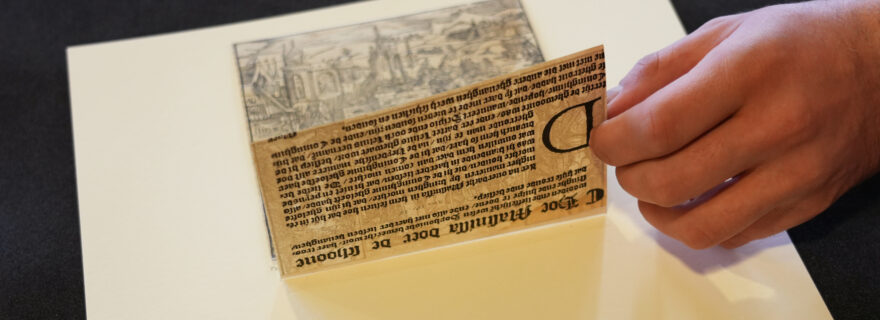Identifying woodcut prints from a 1541 Dutch Livy translation
Thirteen woodcut prints in an uncatalogued box lead to an interesting quest through old books in the Leiden Special Collections. Danny Sunder explains how classic and modern techniques help identify unlinked images, enriching catalogue records.
Two weeks of searching yielded results: the uncatalogued prints turned out to originate from the book De Roemsche historie oft gesten, a 1541 Dutch translation of Livy’s Ab urbe condita. Both the prints and book were based on a German translation of Livy’s work from the early sixteenth century. So, how did we find this out? How did the history of the prints prevent them from being catalogued? And what is the best way to make these images findable?
While most images in the former Prentenkabinet collection of prints and drawings are properly catalogued, a small number of boxes with uncatalogued prints remain. Most contain woodcuts and engravings, originating from books. These books were cut up by collectors, who often coloured the prints to put them up for sale. The boxes also contain a lot of frontispieces: the illustrated title pages of books.
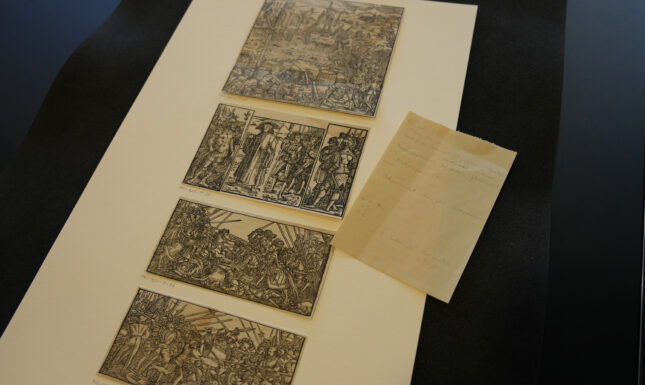

In the back of one specific box, assigned to me as an internship project with Leiden University Libraries, are thirteen interesting woodcut prints belonging to this category. They were donated to the UBL in 1950. A small piece of paper with some notes was included with the prints, providing some useful information. De Roemsche historie oft gesten, in which most of the prints in the box were originally included, was published by Joannes Grapheus in Antwerp in 1541. It’s a Dutch translation of Ab urbe condita by Livy, the famous history of Rome describing the time of the city’s foundation in 753 BCE until Livy’s lifetime. It was originally written between 27 and 9 BCE.
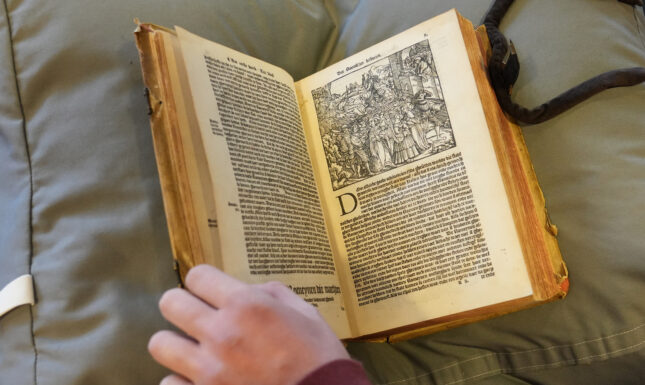

Google Books scanned De Roemsche historie a few years ago. The availability of a digital document made further research a lot easier. The text at the back of the prints made it possible to trace the specific page numbers, leading me to a fascinating 16th-century story of content reuse. The prints turned out to be copies of prints from several German Livy editions published in Mainz by the Schöffer family, starting in 1505. Peter Schöffer, the first book printer of the family, worked closely with the famous Johannes Gutenberg. It is not likely that the original woodblocks of the prints were transported from Mainz to Antwerp for the new edition. More likely, Grapheus made very precise copies of the German prints.
In total, De Roemsche historie contains 52 different prints. Several of them appear multiple times in the book, one even up to 44 times. All but one of these prints were first published in Schöffer’s Livy editions. The one exception, showing Emperor Charles V, originated from another one of Schöffer’s books. Some of the prints are attributed to Conrad Faber von Kreuznach. The other unknown illustrators are gathered under the name ‘master of the Mainz Livy woodcuts’; common practice when the illustrators are unknown.
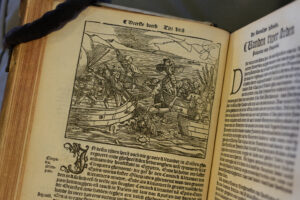

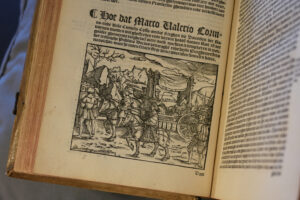

The initiative for the publication of the book came from Jan Gymnicus, an advocate for the use of the Dutch language in books. Despite his pursuit, the Dutch translation was not based on the Latin original. In 1959, Flemish professor Jan Vanderheyden discovered the true origins of the text was a German translation from the Schöffer family, just like the prints.
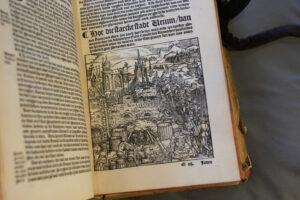

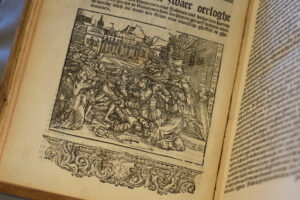

After the Fall of Antwerp in 1585, the book was reprinted several times in the Northern Netherlands. The first reprinted edition appeared in Leiden by Jacobszoon and Bouwenszoon. Further editions were published mostly in Amsterdam. These reprints, usually without images, were published until 1646 when a new illustrated translation appeared in Amsterdam. This new translation was no longer based on the German translation and contained an entirely new set of prints.
The prints were donated to the UBL in 1950 by the widow of dr. J.C. Overvoorde. He was the founder of the Leiden Historical Society (HVOL) and a former director of Museum de Lakenhal. His legacy was originally donated to the UBL in 1934 and is known as the Overvoorde collection. The mentioned prints were part of this legacy, but were found years after J.C. Overvoorde’s death.
Other boxes in the collection also contain interesting prints. Most of them are woodcuts and engravings cut from sixteenth and seventeenth-century books. In most cases, it was possible to identify the prints after some catalogue research. Google Lens can be very useful to find some additional information. Printed text on the back of the prints could also be useful. Fortunately, I was able to use it on other prints in the collection as well. I was, for example, able to identify a collection of 27 prints from Asia, of naukeurige beschryving van het rijk des Grooten Mogols, en een groot gedeelte van Indiën, a Dutch travel book about India. It was written by Olfert Dapper and published by Jacob Meurs in Amsterdam in 1642.
When all the prints have been identified, all additional information will be included in the UBL catalogue records, making the collections better accessible for future generations of library users.
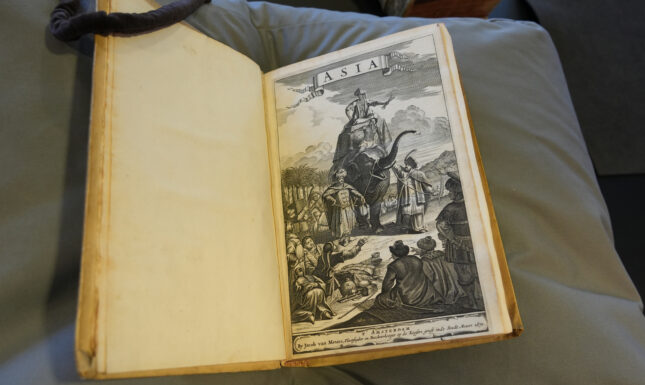

_____
About the author:
Danny Sunder studies history at Leiden University and worked at Leiden University Libraries as an intern for his minor 'Book, book trade, and publishing’.
Further reading
Maite de Beukeleer, Het boek als krachtig medium in zakformaat. De drukkersstrategieën van Joannes Grapheus, Antwerpen 1527-1569 (master thesis, Antwerp 2017).
Elisabeth Leijnse, Laurence Mettewie and Michel Lefftz, ‘Roemsche Historie: la Renaissance néerlandaise en marche’, in: Pierre Assenmaker ed., Tite-Live, un histoire du livre (Namur 2017).
Jan F. Vanderheyden, De Livius-vertaling van 1541 (Ghent 1959).
Wikipedia, ‘Meister des Holzschnitte des Mainzer Livius‘.


